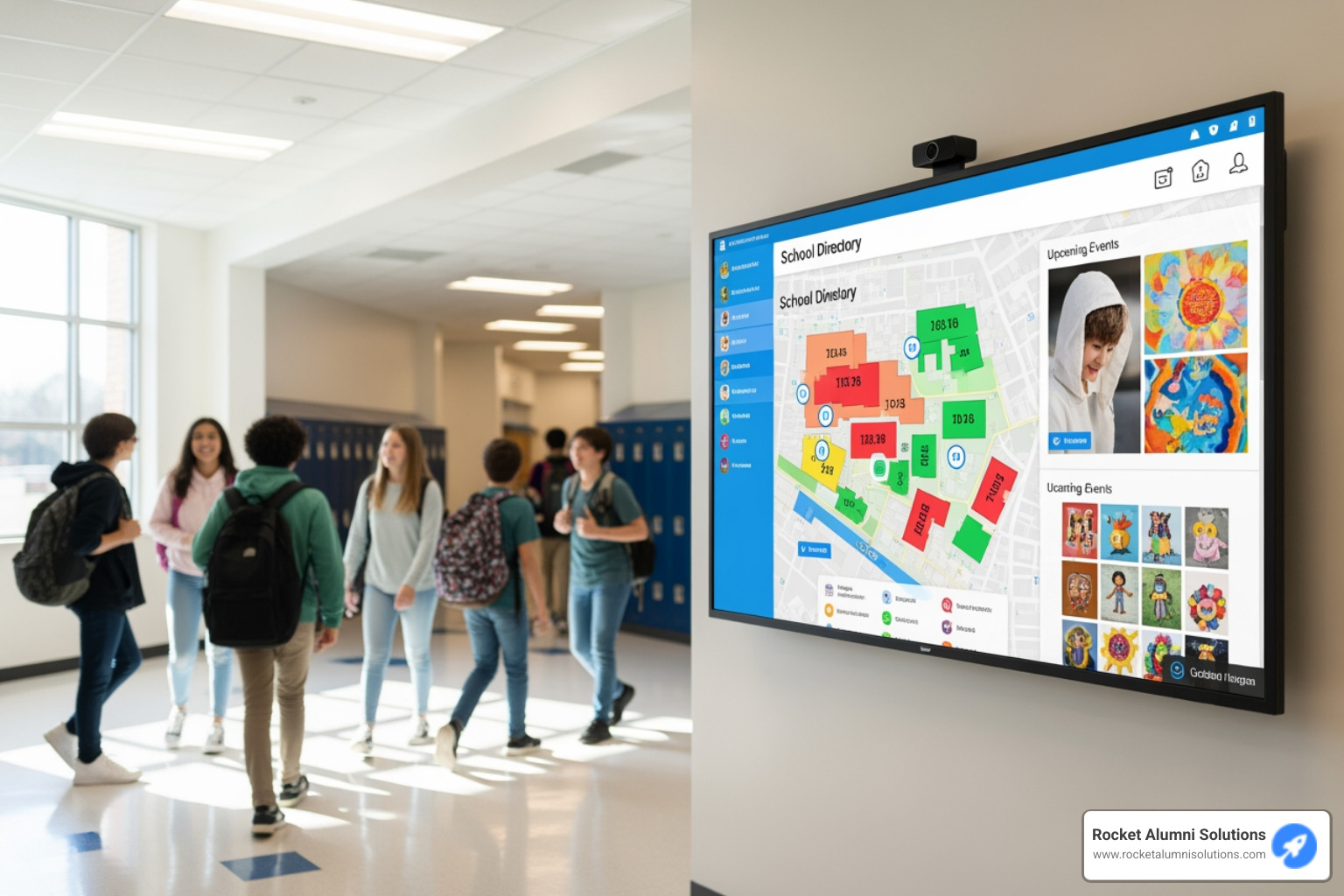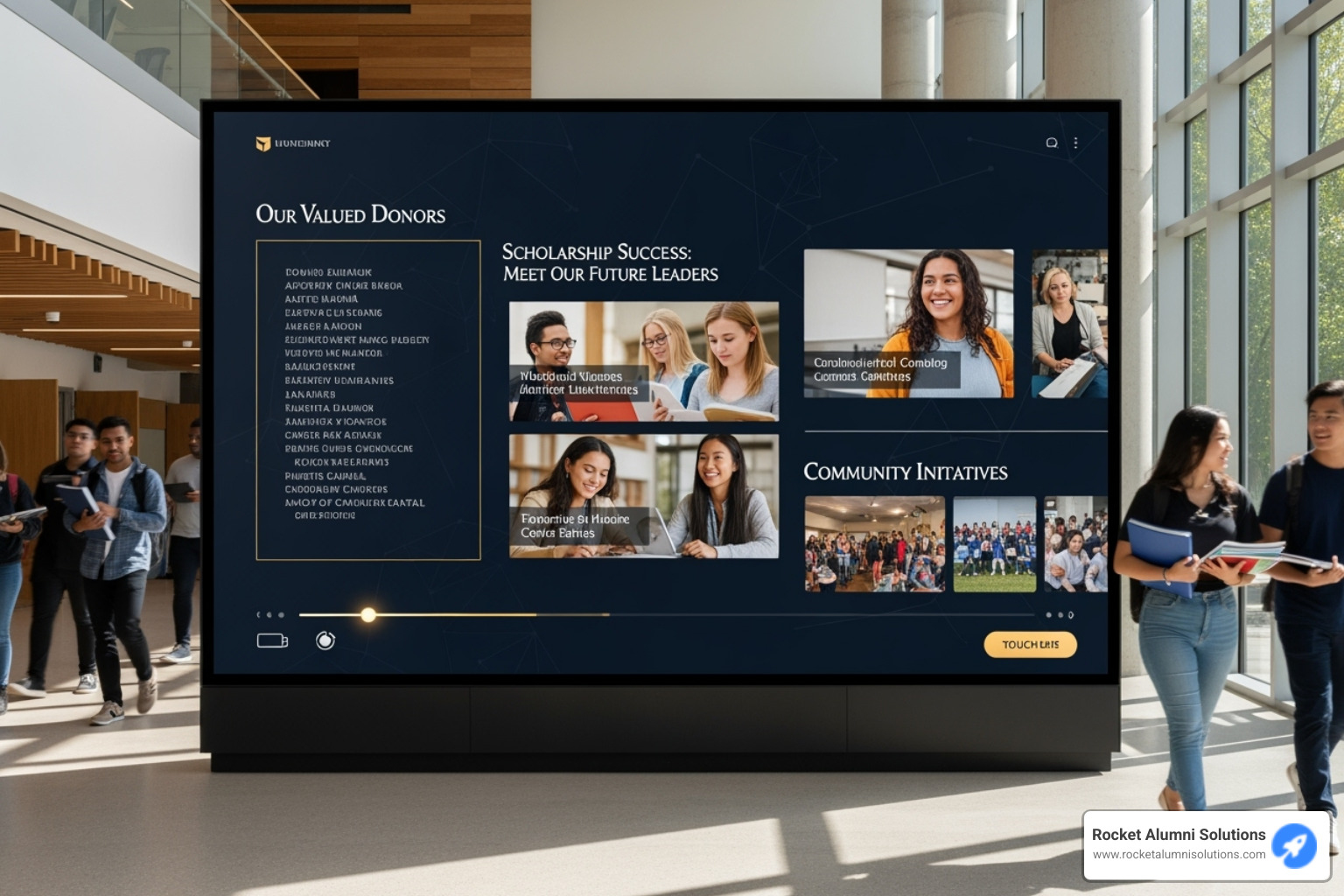Why Honoring Leadership Matters More Than Ever
Captain Honors Display refers to dedicated exhibits, memorials, or recognition systems designed to honor distinguished military leaders, ship commanders, or organizational captains who have demonstrated exceptional service, leadership, and sacrifice. These displays range from traditional physical exhibits featuring personal artifacts and plaques to modern interactive digital platforms that preserve and share the stories of heroes like Captain Jim Lovell, Audie Murphy, and other decorated service members.
Key Types of Captain Honors Displays:
- Physical Artifact Exhibits - Museums displaying personal items like spacesuits, medals, and mission equipment
- Naming Honors - Ships, buildings, or facilities named after distinguished captains
- Digital Interactive Displays - Touchscreen systems featuring multimedia tributes and comprehensive achievement records
- Ceremonial Traditions - Formal military honors including gun salutes and dedication ceremonies
- Memorial Days - Designated recognition days with special events and free public access
The concept of honoring captains extends far beyond a simple plaque on a wall. Whether it's the Cosmosphere Museum displaying Captain Jim Lovell's Apollo 13 Command Module Odyssey alongside his spacesuit, or the Air Force naming a pre-positioning vessel after Captain David I. Lyon who made the ultimate sacrifice in Afghanistan, these displays serve as powerful reminders of courage, leadership, and dedication.
Traditional displays face real challenges. They're static, limited by physical space, and difficult to update. A trophy case can only hold so many medals. A wall plaque tells only part of the story. And once installed, these tributes remain frozen in time, unable to incorporate new information, videos, or interactive elements that could bring a captain's legacy to life for future generations.
The shift toward modern recognition methods reflects our evolving understanding of how people engage with history. Today's audiences expect more than names and dates—they want to experience the stories behind the honors. They want to see video footage, hear personal accounts, and explore achievements in depth. This is especially true for younger generations who have grown up with technology at their fingertips.
As Abraham Lincoln wisely noted, "Any nation that does not honor its heroes will not long endure." This truth applies equally to schools honoring distinguished alumni, military organizations recognizing decorated officers, or communities celebrating local leaders who made a difference.
I'm Chase McKee RAS, founder and CEO of Rocket Alumni Solutions, where we've helped hundreds of institutions modernize their recognition programs by changing static plaques into dynamic Captain Honors Display systems that engage communities and preserve legacies through interactive technology. Our work with schools, military organizations, and nonprofits has shown that the right display approach can dramatically increase engagement, attract alumni, and inspire future leaders.

Handy Captain Honors Display terms:
1. The Living Legacy Exhibit: Telling Stories with Tangible Artifacts
There's something powerful about standing in front of an object that witnessed history firsthand. When you visit a museum and see the actual spacesuit worn by a legendary astronaut or the spacecraft that carried heroes through space, you're not just looking at stuff behind glass—you're connecting with a real person's story in a way that photos and videos can't quite capture.
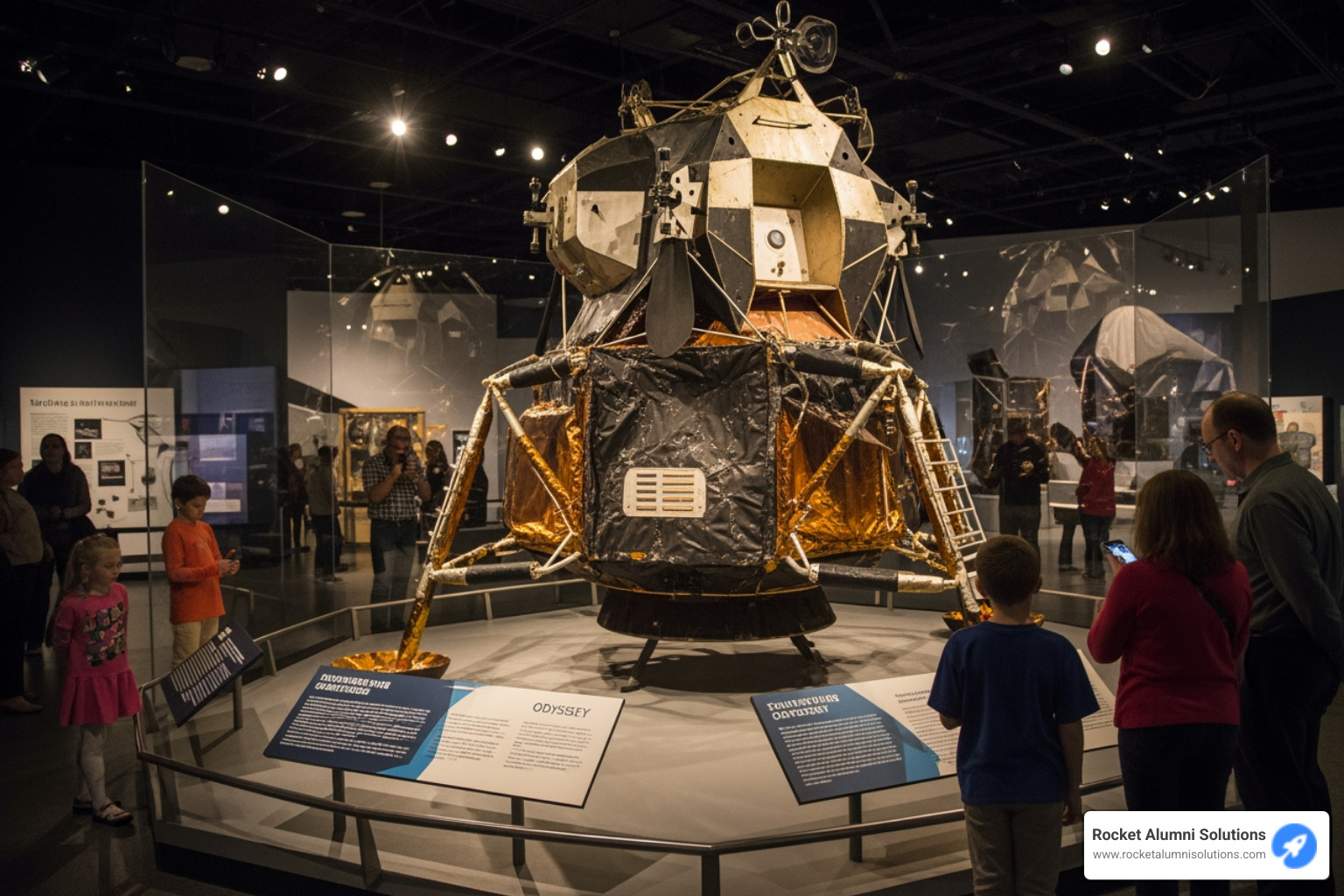
The Cosmosphere Museum in Kansas has created one of the most moving Captain Honors Display exhibits you'll find anywhere. They've taken on the responsibility of honoring Captain Jim Lovell, the legendary astronaut who commanded the harrowing Apollo 13 mission. Their approach is beautifully straightforward: they showcase the actual artifacts that tell his story.
At the heart of their exhibit sits the Apollo 13 Command Module Odyssey—the very spacecraft that brought Lovell and his crew safely home after their oxygen tank exploded 200,000 miles from Earth. Right alongside it, you'll find Captain Lovell's actual spacesuit. These aren't replicas or models. They're the real deal, carrying the marks and wear of their incredible journey.
What makes this Captain Honors Display so effective is how it transforms abstract history into something you can almost reach out and touch. The scorched heat shield on Odyssey tells the story of a desperate reentry. The worn patches on Lovell's spacesuit speak to countless hours of training and mission work. These objects witnessed one of humanity's greatest survival stories, and they share it silently but powerfully with every visitor who walks through the doors.
For organizations thinking about how to honor their own captains and leaders, physical artifacts create an emotional anchor that nothing else quite matches. Of course, you can take these displays even further by combining them with modern technology—Honoring Military Legacy with Interactive Digital Displays shows how digital elements can add layers of storytelling to physical exhibits.
The Significance of Personal Artifacts
Why do Captain Lovell's spacesuit and the Apollo 13 Command Module Odyssey hit us so hard emotionally? It's because they offer something rare: a tangible connection to an extraordinary moment in time. That spacesuit protected a real person during one of the most dangerous missions in space history. Odyssey isn't just a hunk of metal—it's the lifeboat that saved three lives against impossible odds.
Personal artifacts give us historical context in a way that textbooks simply can't. When you see how cramped the Command Module actually was, you understand the claustrophobia and stress those astronauts faced. When you notice the hand-worn controls and switches, you realize these were real people operating real equipment, not characters in a movie.
The emotional impact of standing in front of these objects is profound. You feel awe at what humans can accomplish. You feel respect for the courage it took to climb into that spacecraft. You feel inspired to face your own challenges with the same determination.
And the educational value? It's off the charts. Students who might zone out during a lecture about space missions will stand transfixed in front of Odyssey, asking questions and wanting to know more. The artifacts make abstract concepts concrete. They turn "teamwork" and "perseverance" from buzzwords into lived realities you can see with your own eyes.
Creating a Space for Public Reflection
A truly meaningful Captain Honors Display doesn't just show you artifacts and send you on your way. It invites you to participate in the story, to add your own voice to the chorus of respect and remembrance.
The Cosmosphere understands this beautifully. Alongside their Apollo 13 exhibit, they've placed a memorial book where visitors can share their thoughts, memories, and messages. This simple addition transforms the experience from passive viewing into active visitor interaction. People write about how Captain Lovell inspired them to become engineers. Veterans share memories of serving during the same era. Kids draw pictures of astronauts and write about wanting to explore space someday.
This kind of community tribute creates something special—a living conversation across generations about courage, sacrifice, and what it means to serve something larger than yourself. The memorial book becomes part of the exhibit itself, showing how Captain Lovell's legacy continues to inspire people decades after his missions.
Sharing memories like this honors not just the individual captain, but the broader values they represented. In Lovell's case, that means perseverance (never giving up when things go wrong), teamwork (trusting your crew when lives depend on it), and innovation (finding creative solutions to impossible problems).
Whether it's a physical book, a digital message board, or an interactive touchscreen where visitors can record video messages, creating space for public reflection ensures that your Captain Honors Display remains alive and relevant. It acknowledges that honoring our heroes isn't just about looking backward—it's about carrying their lessons forward and inspiring the next generation of leaders.
2. Enduring Tributes: Naming Conventions and Dedication Days
Some of the most powerful ways to honor distinguished captains don't live behind museum glass. They're woven right into the fabric of our daily lives—in the names of ships cutting through ocean waves, in parks where families gather, and in special days when entire communities pause to remember.
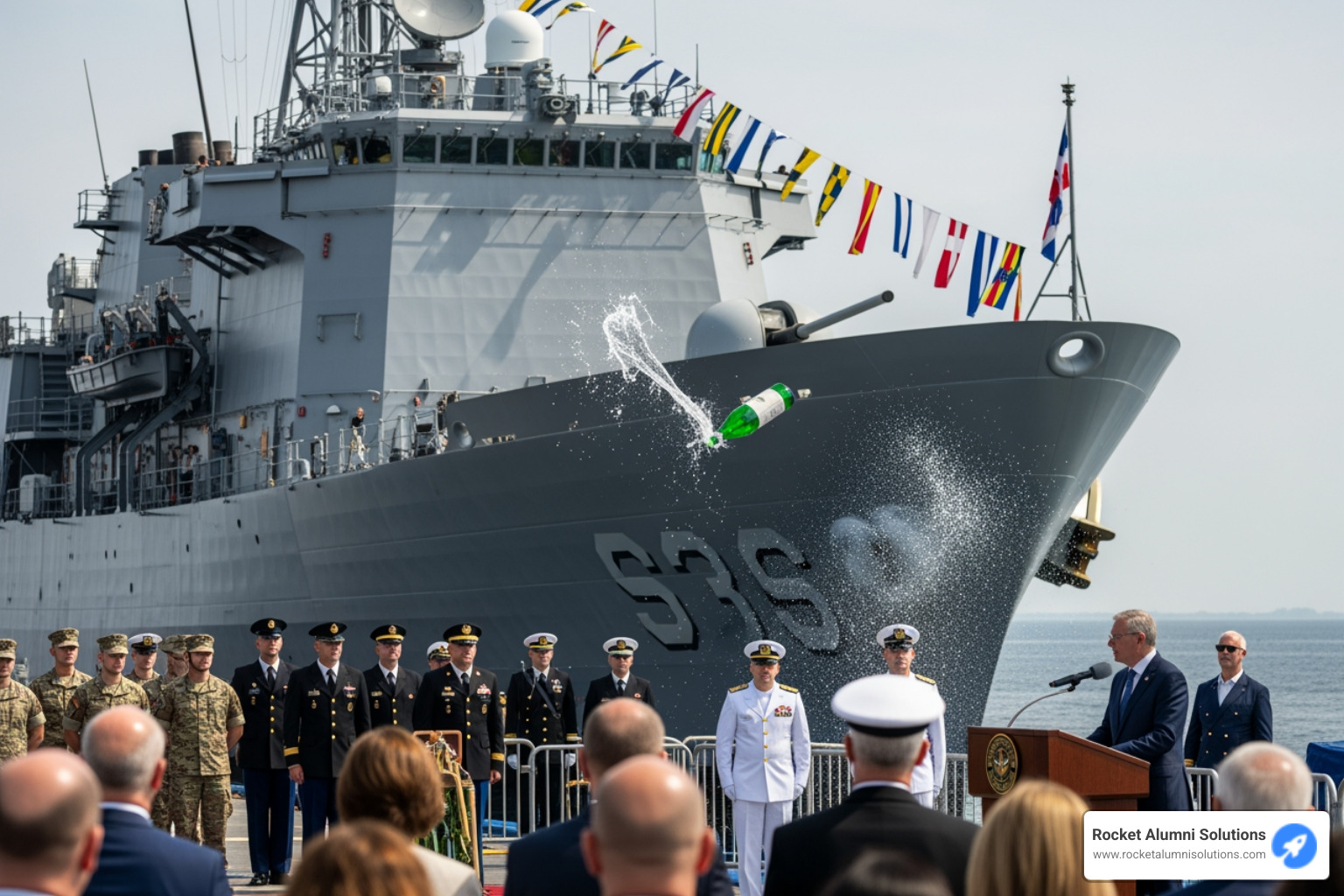
When the U.S. Air Force named its newest pre-positioning vessel the MV David I. Lyon, they created something remarkable—a living memorial that would serve the mission while honoring the man. Captain David I. Lyon, a U.S. Air Force Academy graduate, gave his life in Kabul, Afghanistan, in 2013. Now, every time this vessel delivers critical combat support and positions munitions in operational theaters, it carries his name and his legacy forward.
Captain Lyon wasn't just any officer. He was an Air Force logistician and a true American patriot who earned the Bronze Star, Meritorious Service Medal, Purple Heart, and Air Force Combat Action Medal—all awarded posthumously. The ship bearing his name doesn't just transport supplies. It tells his story to everyone who sees it, serves on it, or reads its name in a port manifest.
Across the country in Buffalo, New York, another form of lasting tribute took shape. The Buffalo & Erie County Naval & Military Park dedicated a new display honoring Lieutenant Commander Ralph C. Wilson, Jr., who commanded the USS Picket during World War II. But they didn't stop there. They established 'Lieutenant Commander Ralph C. Wilson Jr. Day', offering free admission every Friday during Western New York's Armed Forces Week.
This kind of Captain Honors Display opens doors—literally. It invites the community to walk through naval history, to touch the past, and to understand the weight of service. It transforms what could be a simple memorial into an ongoing conversation between generations.
Honoring Service Through Naming
There's something profound about putting a hero's name on something that will endure. It's a military tradition that stretches back centuries, and it works because it keeps memory alive in the most practical way possible.
When a young sailor reports for duty on a vessel named after a fallen captain, they're immediately connected to a legacy. They'll naturally ask, "Who was this person? What did they do?" That curiosity becomes education. That education becomes inspiration. And that inspiration shapes the next generation of leaders.
The practice extends beyond ships. Air Force bases, naval vessels, training facilities, and even entire parks carry the names of those who served with distinction. Each naming ceremony is both an ending and a beginning—a final farewell and a promise that the story will continue.
For anyone wanting to understand the depth of military sacrifice and valor, the U.S. Army's Medal of Honor recipients page offers countless stories of extraordinary courage. These are the individuals whose names grace our institutions, reminding us daily of what true service means.
Creating an annual day of recognition does something special—it builds tradition. And tradition, repeated year after year, becomes part of a community's identity.
'Lieutenant Commander Ralph C. Wilson Jr. Day' isn't just about one man or one day. It's about creating a recurring moment when families, veterans, students, and neighbors come together. These annual events often include ceremonies, educational programs, and opportunities for people who might never otherwise visit a naval park to experience history firsthand.
The genius of these community days lies in their accessibility. By offering free admission and special programming, they remove barriers. They say, "This history belongs to all of us. Come learn. Come remember. Come be inspired."
Local government involvement amplifies the impact. When mayors, city councils, and community leaders participate, it signals that this recognition matters at every level. It's not just military history—it's our history.
Perhaps no story illustrates this better than the five Sullivan brothers, all lost when the USS Juneau sank during World War II. The Navy named a destroyer USS The Sullivans in their honor, memorializing not just one captain but an entire family's sacrifice. Their story became a rallying point for national unity and a sobering reminder of war's true cost.
These naming honors and dedication days create lasting legacies that traditional plaques simply can't match. They invite participation, spark curiosity, and ensure that the captains we honor remain part of living memory—not forgotten footnotes in dusty history books.
3. The Modern Captain Honors Display: A Digital Deep Dive
We've explored museums and naming ceremonies—powerful ways to honor our captains. But what happens when a leader's legacy is so vast, so rich with achievement, that traditional displays simply can't contain it all? That's where digital technology steps in to revolutionize how we preserve and share these incredible stories.
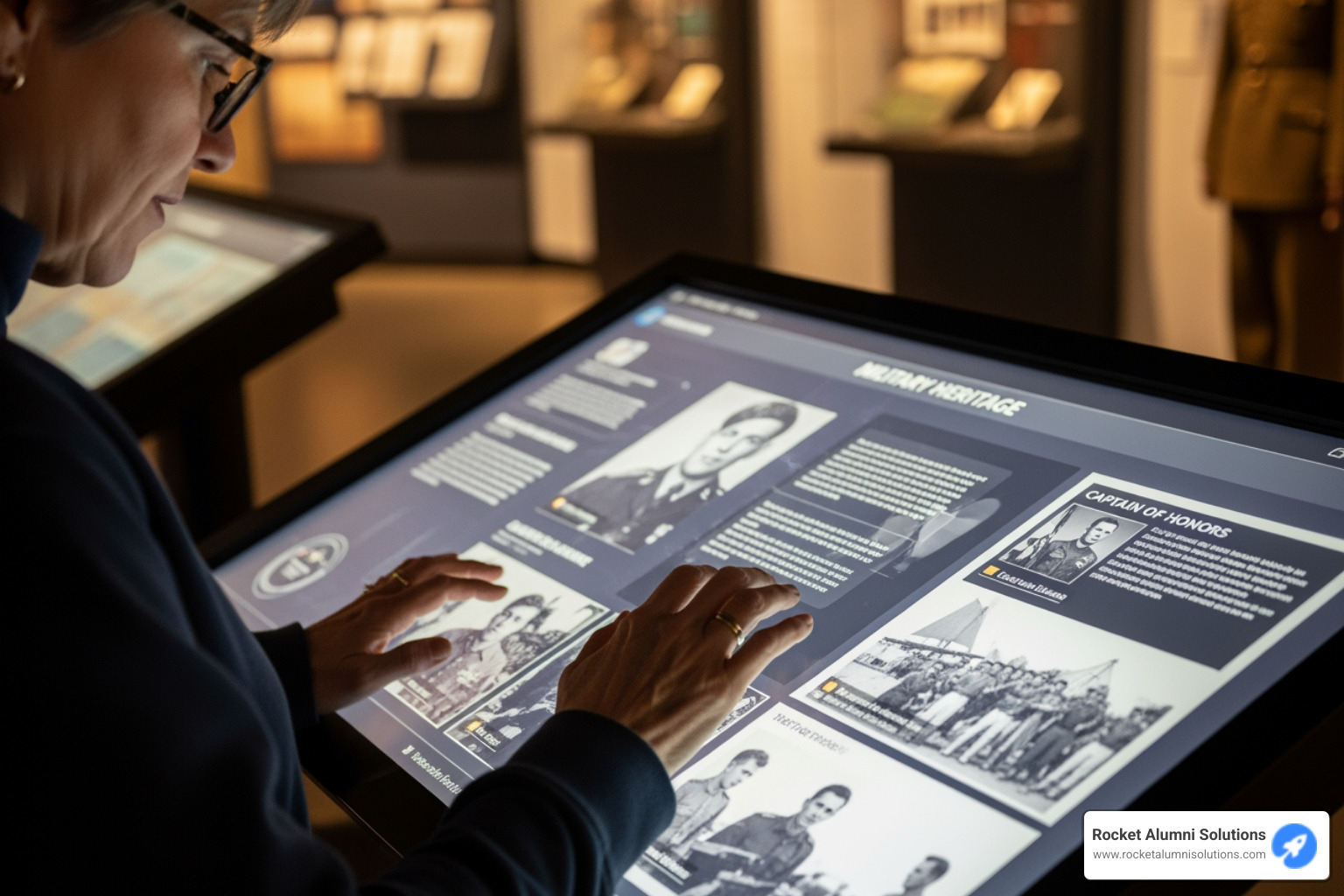
Consider Audie Murphy, whose military career produced a staggering collection of honors. This young soldier earned every single American combat award for valor available during World War II—the Medal of Honor, Distinguished Service Cross, two Silver Stars, and three Purple Hearts, just to name a few. He also received the French Legion of Honor and Belgium's Croix de Guerre. After his military service, his legacy continued to grow with the establishment of the Sergeant Audie Murphy Club and facilities named in his honor across the country.
How do you capture all of that in a single display case? The honest answer is: you can't. Not with traditional methods, anyway.
This is exactly why modern Captain Honors Display systems have become so essential. Digital archives don't run out of wall space. They don't limit you to a handful of photos or a brief inscription. Instead, they create an immersive experience where visitors can explore every chapter of a captain's journey, from their first day of service to their lasting impact on future generations.
Our Interactive Military Honor Display and Military Legacy Digital Exhibit solutions are built specifically for this challenge—preserving comprehensive legacies while making them genuinely engaging for today's audiences.
Cataloging a Lifetime of Achievements
Think about what a traditional plaque would say about Audie Murphy: "Medal of Honor recipient, most decorated soldier." That's technically accurate, but it barely scratches the surface. It doesn't tell you about the freezing January day in France when he single-handedly held off an entire company of German soldiers. It doesn't explain how he later became an advocate for veterans struggling with what we now call PTSD, speaking openly about his own battles when few others would.
Digital displays let us go deeper. Much deeper.
With our Veterans Digital Hall platform, we can document every medal, every promotion, every moment that mattered. Each Medal of Honor comes with its own story—the date, the location, the specific act of valor that earned it. Foreign decorations can be explained in their historical context, helping visitors understand the international impact of a captain's service. We can track service ranks throughout a career, showing the progression from lieutenant to captain to beyond.
Post-military recognition deserves its own space too. The Sergeant Audie Murphy Club wasn't just a nice gesture—it represents an ongoing commitment to excellence in the NCO corps. Digital archives can explore these lasting impacts in ways that static displays simply cannot match.
The Interactive Captain Honors Display
Here's where the magic really happens. When you combine comprehensive content with touchscreen technology, you create something that feels less like reading a history book and more like having a conversation with the past.
Visitors become explorers. Instead of passively reading whatever information happens to be on the wall, they can choose their own path through a captain's story. Maybe someone's particularly interested in a specific campaign. They can tap that medal and instantly see video footage from that battle, read first-hand accounts, and view photos from the field.
We integrate videos seamlessly throughout the experience—everything from grainy historical footage to modern interview clips with fellow service members who served alongside these heroes. Photos appear in high resolution, letting you see the determination in a young captain's eyes or the camaraderie in a unit photo. Our animated flip books bring a unique, nostalgic touch, showcasing everything from training days to unit histories in a format that feels both modern and warmly familiar.
Digital yearbooks add another dimension entirely, capturing the early days before the medals and the headlines—when these captains were just young people answering their nation's call.
But the real innovation? Mobile accessibility. Through simple QR codes placed near physical displays, visitors can pull up the entire Captain Honors Display on their own phones or tablets. Students at institutions like Emory University, Northwest Missouri State, and the University of Maryland can explore these tributes anywhere—in the library, in their dorm room, or years later when they're sharing stories with their own children.
The display doesn't end when they walk away. They can share profiles through social media, bringing these stories to friends and family who might never visit the physical location. This digital approach transforms a single memorial into a living, breathing network of remembrance that reaches far beyond any one wall or building.
At Rocket Alumni Solutions, we've seen how this technology changes the conversation around military honors. It's not about replacing traditional tributes—it's about amplifying them, making sure that comprehensive legacies like Audie Murphy's get the full, rich telling they deserve. Because when we honor our captains, we shouldn't have to choose between depth and accessibility. With the right digital tools, we can offer both.
4. Ceremonial Displays: The Power of Time-Honored Tradition
While modern technology offers innovative ways to honor our captains, we must never underestimate the enduring power of time-honored traditions and ceremonies. These rituals, steeped in history and meaning, provide a profound way to show respect, maintain discipline, and foster a sense of shared identity within military organizations.

When you witness a military ceremony, you're seeing something far more significant than simple formality. Naval customs and military courtesies form the very foundation of military life. From the crisp hand salute to the thundering gun salutes, from the precision of side honors to the respect shown in passing honors, these practices aren't just for show. They maintain discipline, demonstrate respect, and ensure the smooth operation of complex military environments.
These traditions instill a sense of order and camaraderie that binds service members together across generations. They connect today's sailors to those who served centuries before them. For organizations looking to bridge these ceremonial traditions with modern recognition methods, a Military Service Recognition Kiosk can provide digital context that brings these rich customs to life for visitors.
The salute stands as perhaps the most recognizable symbol of military courtesy. Its origins reach back centuries—from medieval knights raising their visors to show friendly intent, to the custom of displaying an empty, weaponless hand as a sign of peace. Today, it remains a powerful symbol of respect and comradeship among service personnel. When a junior enlisted member salutes an officer or an officer returns the gesture, it's an acknowledgment of rank, authority, and shared dedication to something larger than themselves.
But ceremonial honors extend far beyond the individual salute. The 21-gun salute represents the highest honor, typically rendered to the President of the United States or rulers of foreign nations. The precise, timed firing of cannons creates a powerful auditory tribute that resonates deep in your chest and soul. Manning the rail offers another striking visual display, where the ship's crew lines the rails and superstructure to salute a passing dignitary or another vessel. It's a breathtaking sight that speaks to unity and collective respect.
The quarterdeck of a naval vessel holds special significance as a sacred space, a focal point for official and ceremonial functions. Strict rules of conduct govern this area, including the requirement to salute upon entry and exit. This reflects its importance as the symbolic heart of the ship. Even the phrase "Aye, aye, Captain" carries deeper meaning than a simple "yes." In military parlance, it signifies "I understand and will obey," reflecting a profound level of discipline and trust between leader and crew.
These ceremonial displays connect service members to a proud history while reminding the public of the gravity and dignity of military service. They're living traditions that continue to honor captains and leaders in ways that transcend words or physical monuments. When combined with modern Captain Honors Display technology, these time-honored ceremonies gain new dimensions, allowing their meaning and context to be preserved and shared with future generations who may not fully understand their historical significance.
Frequently Asked Questions about Honoring Captains
Who was Captain Jim Lovell and why is he a legendary astronaut?
Captain Jim Lovell earned his place in history as Commander of the Apollo 13 mission, a journey that became known as NASA's "successful failure." When an oxygen tank exploded 200,000 miles from Earth, Captain Lovell's calm leadership and quick thinking, combined with the dedication of his crew and mission control, turned what could have been a tragedy into one of humanity's greatest survival stories.
But Apollo 13 wasn't Lovell's only claim to fame. He was actually the first person to fly to the Moon twice, and he's one of only 24 humans who have ever traveled to our nearest celestial neighbor. Throughout his career, he demonstrated the kind of courage, problem-solving ability, and unwavering dedication that defines true leadership, especially when everything goes wrong.
The Cosmosphere recognizes his extraordinary legacy with a special Captain Honors Display that features the actual Apollo 13 Command Module, Odyssey, alongside Captain Lovell's spacesuit. These artifacts allow visitors to stand face-to-face with the equipment that brought these astronauts home safely, changing an incredible story into something you can almost touch.
What is the Sergeant Audie Murphy Club?
The Sergeant Audie Murphy Club (SAMC) represents the highest standard of excellence for noncommissioned officers in the United States Army. Established in 1986 at Fort Hood, Texas, this elite organization honors NCOs who embody the leadership, courage, and compassion that defined Sergeant Audie Murphy himself.
Murphy, was one of the most decorated soldiers in American military history. The club bearing his name recognizes current NCOs who demonstrate outstanding professionalism, exceptional leadership abilities, and a genuine commitment to caring for their fellow soldiers. Becoming a member isn't easy—candidates must pass through a rigorous selection process that tests their knowledge, leadership skills, and dedication to the Army's values.
Once selected, members are expected to continue upholding Murphy's legacy by serving as role models and mentors to the next generation of soldiers. It's not just an honor to receive; it's a responsibility to live up to every single day.
How can an organization create a memorial for a veteran or leader?
Creating a meaningful memorial doesn't have to be complicated, but it should be thoughtful. The most effective tributes combine several approaches to ensure the honoree's story reaches people in different ways and continues inspiring future generations.
Physical exhibits remain powerful starting points. Displaying personal artifacts, uniforms, medals, photographs, and memorabilia creates that tangible connection to history, much like the Cosmosphere's tribute to Captain Lovell with his actual spacesuit and command module.
Naming and dedication ceremonies offer lasting recognition that becomes part of daily life. Whether it's naming a ship like the MV David I. Lyon, establishing a special recognition day like Lieutenant Commander Ralph C. Wilson Jr. Day, or dedicating a building or award, these honors ensure the individual's name continues to be spoken and remembered.
Digital interactive displays represent the future of memorials, and this is where our work at Rocket Alumni Solutions truly makes a difference. A modern Captain Honors Display can showcase unlimited content—comprehensive biographies, photo galleries spanning entire careers, video testimonials, interactive timelines, and digital guestbooks where visitors can leave their own reflections. Unlike physical displays that are limited by wall space and can never be updated, digital solutions grow with the story. They're accessible via touchscreens at physical locations, through websites, and on mobile devices, ensuring anyone, anywhere can connect with the honoree's legacy.
Ceremonial traditions add gravitas and honor to any memorial dedication. Traditional military honors like flag ceremonies, gun salutes, or formal dedication events provide that public acknowledgment of service and sacrifice that resonates deeply with veterans, families, and communities.
The most powerful memorials are those that feel personal, remain engaging across generations, and are easily accessible to everyone who wants to learn the story. By combining traditional elements with modern technology, we can create tributes that honor the past while speaking to the present and inspiring the future.
Conclusion: The Future of Honoring Our Heroes

We've journeyed through many different ways to honor our captains—from the quiet dignity of Captain Lovell's spacesuit at the Cosmosphere to the mighty presence of naval vessels named after fallen heroes. We've explored the precision of military ceremonies and the innovation of digital archives that capture every medal, every story, every moment of service.
Each approach carries its own weight and meaning. The physical artifact lets you stand inches from history. The named ship carries a legacy across oceans. The gun salute echoes with centuries of tradition. And the digital display? It brings all these elements together in ways we never imagined possible.
The future of the Captain Honors Display isn't about choosing between old and new. It's about weaving them together into something more powerful than either could be alone. Picture walking up to a display case holding a Purple Heart, then tapping a nearby screen to watch the ceremony where it was awarded. Imagine reading a plaque about a decorated captain, then pulling out your phone to explore their entire career through photos, videos, and personal letters.
This is where tradition meets innovation. This is where memory becomes experience.
At Rocket Alumni Solutions, we've seen how this combination transforms the way communities connect with their heroes. Our work at institutions like Emory University, the University of Maryland, and Northwest Missouri State has shown us something remarkable: when you make history interactive and accessible, people engage with it differently. Students linger longer. Veterans share more stories. Families come back again and again.
We're not just building displays. We're creating spaces where inspiration happens. Where a young person sees Captain Lovell's achievements and thinks, "Maybe I could reach for the stars too." Where a service member reads about Audie Murphy's courage and finds strength for their own challenges. Where communities gather to remember, to honor, and to be reminded of what leadership truly means.
The importance of memory cannot be overstated. As we've learned from the stories of Captain David I. Lyon, Lieutenant Commander Ralph C. Wilson Jr., and countless others, these aren't just historical figures—they're guides showing us the way forward. Their sacrifices, their dedication, their unwavering commitment to something greater than themselves—these are the lessons every generation needs to learn.
Technology gives us new tools, but the mission remains timeless: to ensure that no hero is forgotten, no sacrifice goes unrecognized, and no story of courage fades into silence. When we combine physical and digital, we create tributes that can grow and evolve, that can reach people wherever they are, and that can inspire leadership for decades to come.
The heroes we honor deserve nothing less than our best efforts to tell their stories completely, authentically, and powerfully. That's the future we're building, one Captain Honors Display at a time.
Ready to bring your vision to life? Explore our digital awards showcase and find how we can help you create a tribute that truly honors your heroes—today, tomorrow, and for generations to come.




















































































































